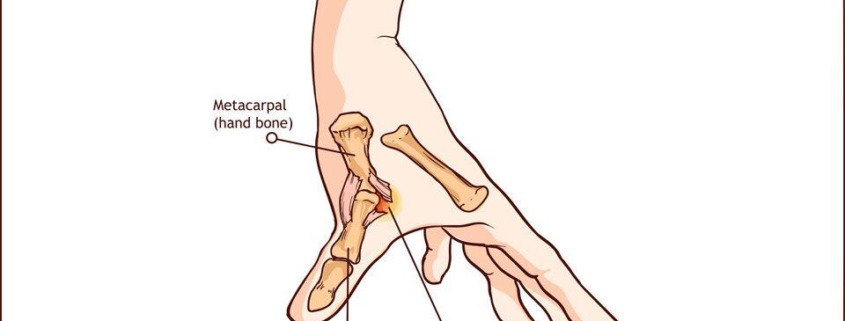
Ulnar Collateral Ligament Injuries of the Thumb
Overview
Ulnar Collateral Ligament (UCL) Injuries of the thumb, commonly referred to as ”skier’s thumb,” is a common condition affecting the supportive structures of the thumb. This ligament stabilizes the thumb’s base, protecting it from extreme movements that could lead to injury. The condition happens when too much stress is applied to the thumb, causing a partial or complete tear of the UCL.
Types
This condition can present in two forms:
-
- Partial tear: Here, the UCL is partially torn but still functional.
-
- Complete tear: This involves total rupture of the UCL, rendering it non-functional. Sometimes, a piece of bone may get pulled away in the process, leading to a fracture.
Causes
UCL injuries are often due to trauma or extreme stress on the thumb. They commonly occur during activities like skiing—hence the nickname ”skier’s thumb.” However, it may also arise from other sports like football, basketball, or falls that force the thumb away from the fingers.
Symptoms
If you’ve sustained a UCL injury, you may experience the following symptoms:
-
- Pain at the base of your thumb
-
- Swelling in the thumb or hand
-
- Difficulty moving or gripping objects with the thumb
-
- An unstable or weak thumb
-
- Bruising around the thumb
Diagnosis
Diagnosing a UCL injury typically involves a physical examination and imaging tests. Your doctor will ask about your symptoms, inspect your hand for swelling, tenderness and stability. They may also use X-rays or Ultrasound to assess any potential bone fractures and ligament damage.
Treatment Options
The treatment for UCL injuries will depend on the severity of the tear. Treatments typically range from non-surgical to surgical methods.
Non-surgical treatments include:
-
- Immobilization: Splint or cast to protect the thumb and allow healing.
-
- Anti-inflammatory medications: To reduce pain and swelling.
-
- Physical therapy: To restore strength and movement once healing has taken place.
In cases where the tear is severe or there is a fracture, surgery might be necessary. The procedure involves reconnecting the torn ligament or reattaching the bone fragment.
Living With Ulnar Collateral Ligament Injuries of the Thumb
Having a UCL injury might be challenging, but with the right approach, you can manage it effectively. Self-care tips include:
-
- Follow your doctor’s advice and treatment plan.
-
- Wear your splint or brace as recommended.
-
- Engage in physiotherapy exercises to restore thumb strength and flexibility.
-
- Avoid strenuous activities that can aggravate the injury.
When to Seek Help
Seek immediate medical attention if you notice:
-
- Severe thumb pain and swelling
-
- Cannot move or use your thumb normally
-
- Your thumb feels unstable or weak.
-
- Change in thumb shape or alignment.
Remember, early treatment can lead to better outcomes and prevent long-term complications, like chronic thumb instability or arthritis.
